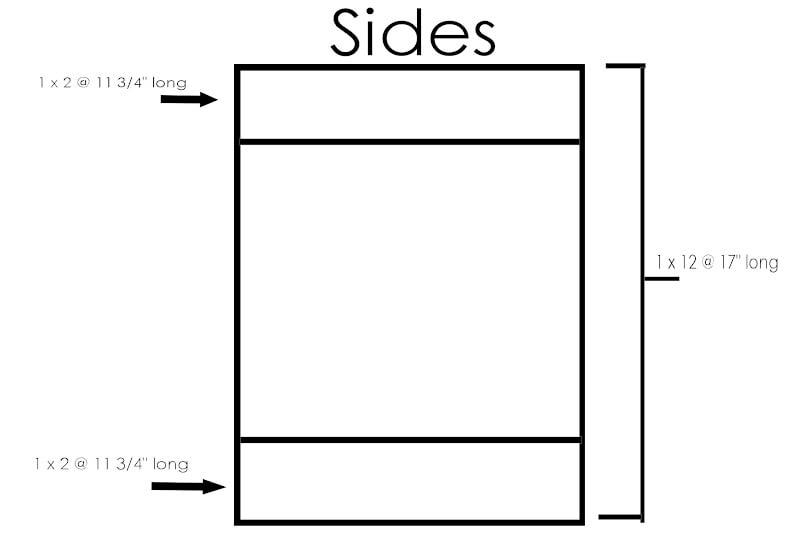I'd been wanting to add a piece of furniture at the end of my son's bed for awhile, but I had a difficult time deciding on what exactly to do. Not only did I want it to be something he could sit on, but also I wanted to add some extra storage. We had thought of a trunk but the idea of little fingers getting pinched made that idea a little scary. I turned to your website for help. I didn't find exactly what I wanted, but I did get some inspiration from the new Kentwood Bookshelf. It's constructed the same way but with some sizing adjustments.
Preparation
2 - 8 ft 1x2
3 - 8 ft 2x2
6 - 8 ft 1x3
1 - 6 ft 1x12
6 - 1x3 @ 37"
5 - 1x3 @ 32 3/4"
1 - 1x2 @ 32 3/4"
9 - 1x2 @ 11 1/4"
4 - 2x2 @ 32 3/4"
1 - 2x2 @ 11 1/4"
4 - 2x2 @ 17"
2 - 1x12 @ 17"
Please read through the entire plan and all comments before beginning this project. It is also advisable to review the Getting Started Section. Take all necessary precautions to build safely and smartly. Work on a clean level surface, free of imperfections or debris. Always use straight boards. Check for square after each step. Always predrill holes before attaching with screws. Use glue with finish nails for a stronger hold. Wipe excess glue off bare wood for stained projects, as dried glue will not take stain. Be safe, have fun, and ask for help if you need it. Good luck!
Instructions
Step 1
Step 3
Step 4
Step 6
Step 7
Step 8
Step 9
It is always recommended to apply a test coat on a hidden area or scrap piece to ensure color evenness and adhesion. Use primer or wood conditioner as needed.













Comments
Guest (not verified)
Thu, 04/05/2012 - 05:48
Interestings pictures and
Interestings pictures and information about,how to make a Footboard bench. Realy like this post
GianaKyle
Fri, 04/06/2012 - 23:23
CLICK THIS LINK
hello there
Lanie (not verified)
Sun, 06/24/2012 - 20:07
love this
Thinking of adapting for a window seat, but will probably use bead board for the back, and solid planks for the seat and shelf.... but I enjoyed seeing the play by play! Thanks!
Winnipeg
Sun, 11/02/2014 - 07:15
materials
I'm assuming where it keeps saying 2x2's this is reallly supposed to be 4x4?
In reply to materials by Winnipeg
Stephen Peters
Sun, 11/02/2014 - 17:54
2 x 2 is correct.
2 x 2 is correct.